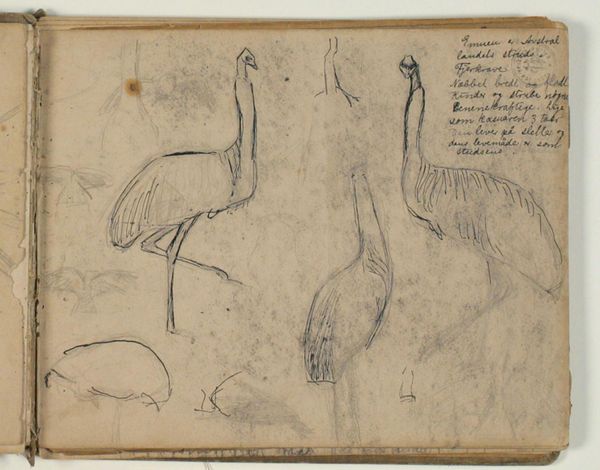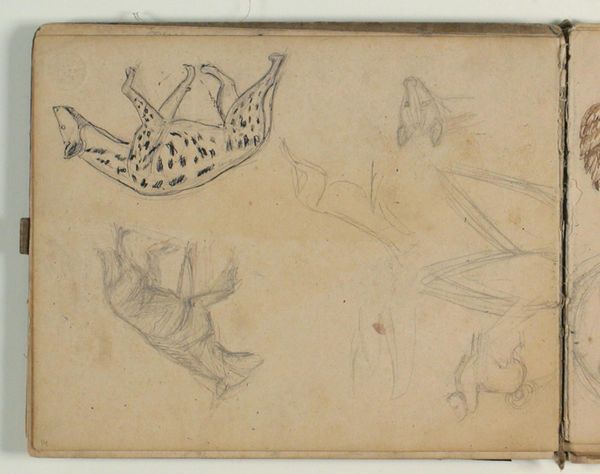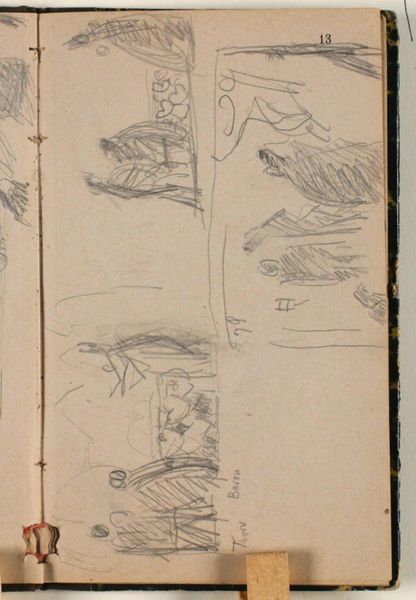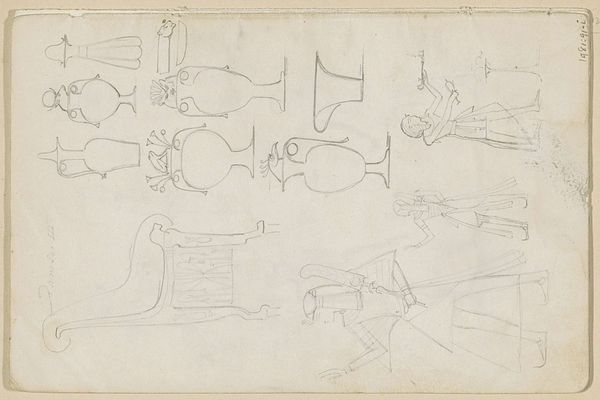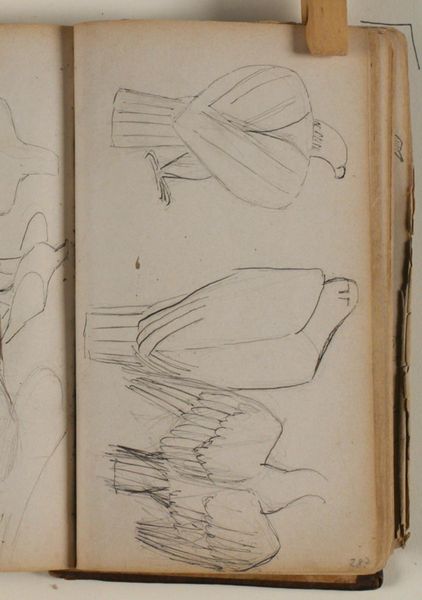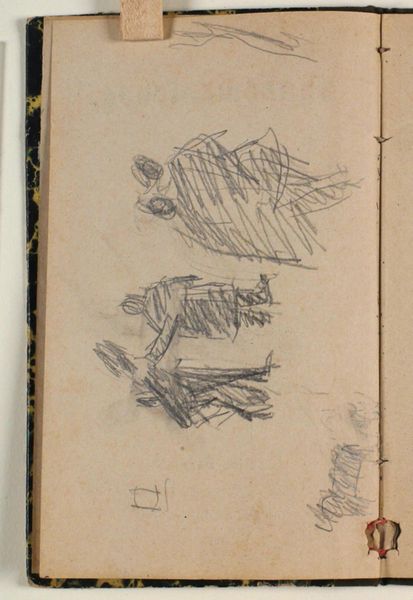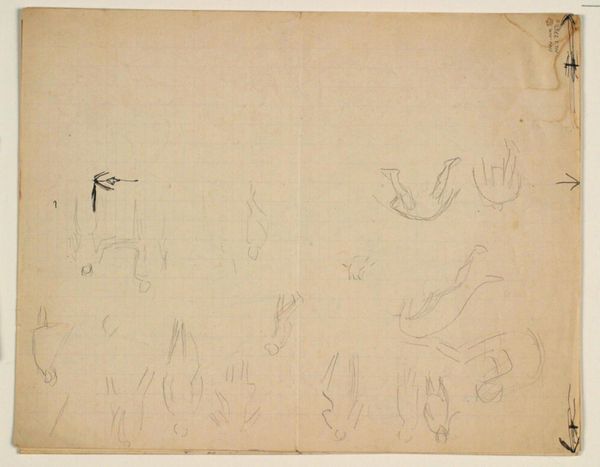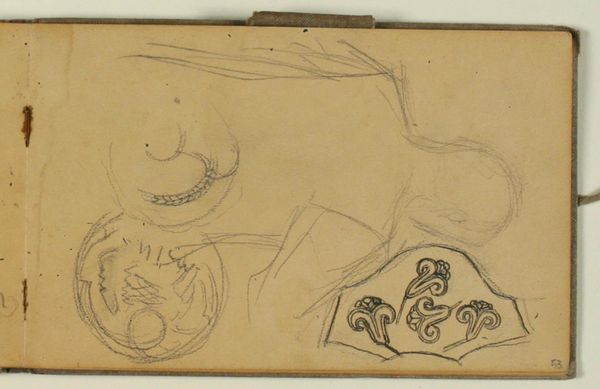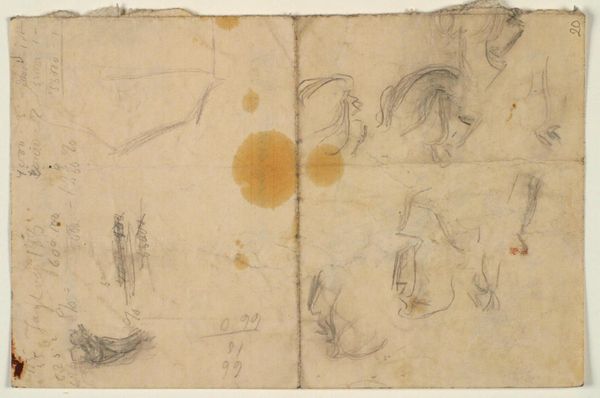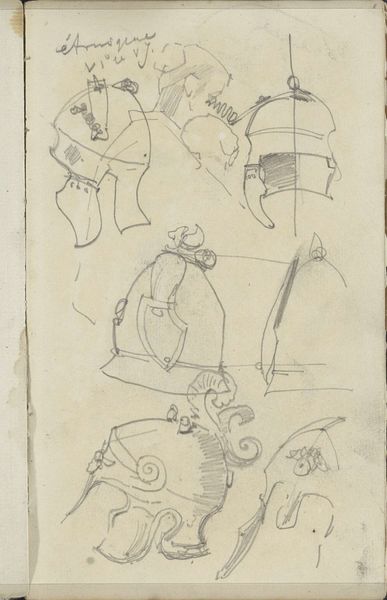
Skitser af lamaer, kattehoved og ornamentik 1900 - 1905
0:00
0:00
drawing
#
drawing
#
aged paper
#
toned paper
#
light pencil work
#
personal sketchbook
#
coloured pencil
#
sketchbook drawing
#
watercolour bleed
#
watercolour illustration
#
sketchbook art
#
watercolor
Dimensions: 204 mm (height) x 260 mm (width) x 13 mm (depth) (monteringsmaal), 204 mm (height) x 260 mm (width) (billedmaal)
Curator: Here we have a page from Niels Larsen Stevns’ sketchbook, titled “Skitser af lamaer, kattehoved og ornamentik,” dating from 1900 to 1905. The artwork involves colored pencil, drawing, and watercolor on toned paper. Editor: There’s a whimsical feel to this page. It’s so direct, so immediate. The animals feel more observed than rendered, if you see what I mean. Curator: I do. These sketchbook pages are really fascinating, because they get us closer to Stevns' artistic practice. We see the materiality of his tools: the light pencil work, watercolor bleeds into the toned paper. These factors were central to Stevns' practice and really inform our perception of his finished pieces. Editor: Right, the immediacy gets me thinking about representation and power. How did Stevns, as a European artist, encounter and choose to depict these "exotic" animals? The sketchiness lends a kind of casualness, but we need to consider the colonial gaze at play. Where did he even encounter a llama? What does the casual inclusion of "ornamentik" signify about the culture of appropriation that ran rampant during the turn of the century? Curator: That’s a really good point, and the incomplete quality of the ornament sketches speaks to Stevns’ own consumption of them as a tool and his incomplete understanding, even as he uses these exotic cultural references to advance his material and practice as an artist. He may not have even seen them himself—likely reproducing them from pictures, even in other artistic works. Editor: Exactly! It pushes us to question what's left out, too. Why these subjects, in this arrangement? Is there an intention beyond just practice and composition? What can we understand about Danish attitudes and connections at the time regarding the ornamental designs in relationship with the sketches of exotic animals on display here at SMK? Curator: Considering the personal nature of the sketchbook, it would be easy to write this page off as simple practice but you make it very clear how loaded each element and the whole assembly is with social information and possible implications of colonialism and art history. Editor: These works serve as potent reminders that art, even in its most intimate forms, remains enmeshed within larger conversations of history and power. Curator: Absolutely, and analyzing the labor, materials, and the consumption involved enriches our viewing. Editor: Precisely, giving the page fresh meaning!
Comments
No comments
Be the first to comment and join the conversation on the ultimate creative platform.

